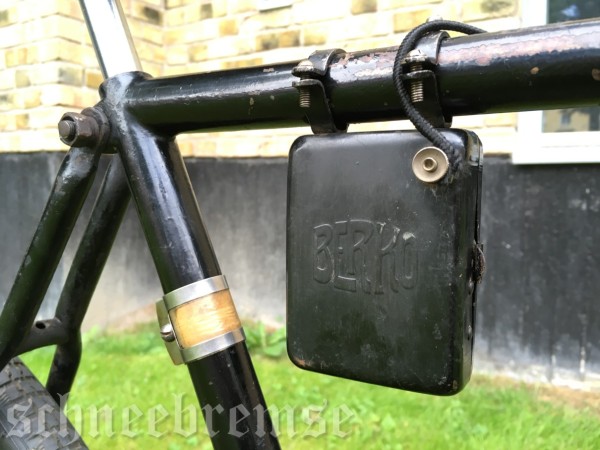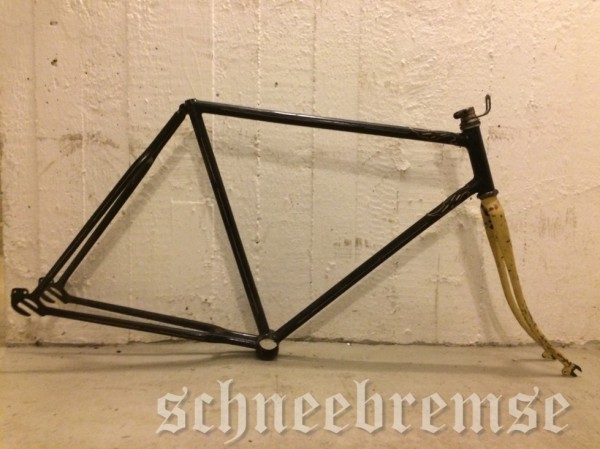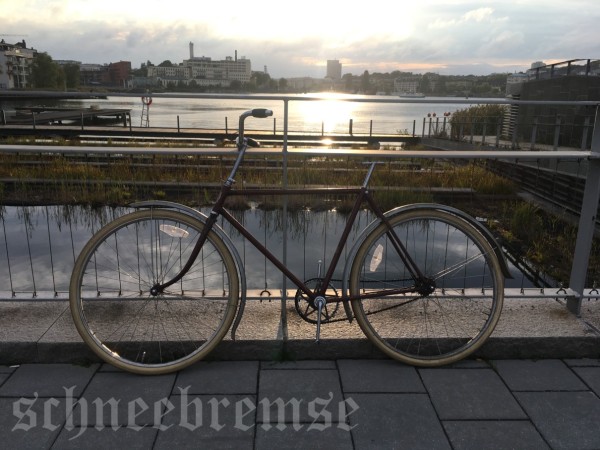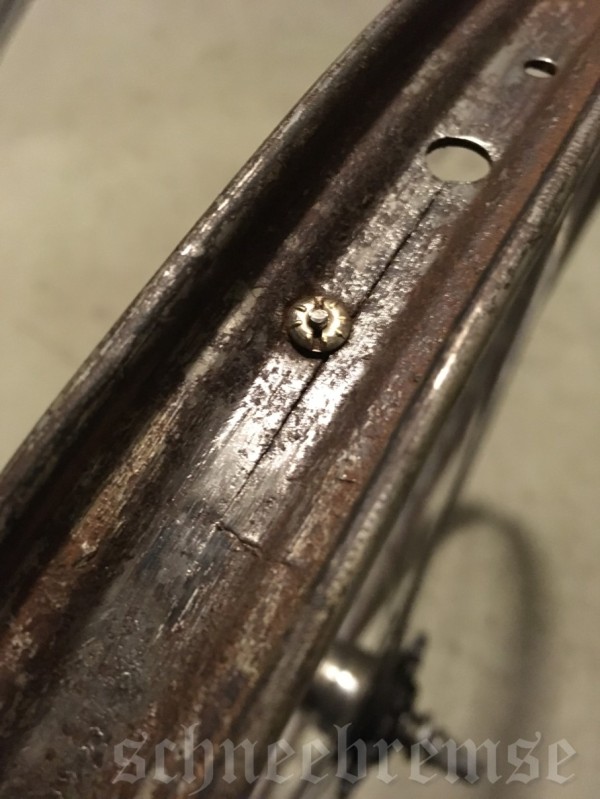A new start.
The years passed by. The wheels was standing there, black rims with white linings, shiny hubs and brand new black Duro HF-110 tires. I almost forgot them until one day I found them behind some cardboard boxes in the basement.
Again the vision of the old black bicycle came before me. By now I had joined a discussion group about vintage bicycles. I decided to post an ad, just for fun. Wanted: black 1930’s Swedish made bicycle frame. I did not think more of that, but one day I got an reply from a fellow that wrote he was on his way to make a trade with a different bicycle enthusiast. In that trade he would leave one bicycle and get one complete bicycle and a spare frame.
He asked me if I was interested in the extra frame, after all. He did not have any use for it. I replied that I was very interested and asked what brand it was.He wrote that it was an Stockholm made Crescent from 1927. The finish was in bad shape and all parts would be removed from it but the frame would be complete with front fork. That did not bother me at all. Quite the opposite, I had the parts but no complete frame.

The photo I was sent of the frame, all parts were to be removed
Some weeks later I had the frame. I bought some other bicycle parts from him at the same time. Vintage handlebars, a chain wheel with Fauber crank. The plan was to add it to the frame.
But after looking at the parts for the first time I realized that the brand new chromed chain wheel from the 1950´s would never fit on the worn, repainted, scruffy frame from 1927. But the wheels fitted the frame perfectly. But what to do now?
The answer came in a rather strange way. My brother heard of an bicycle flee market in south of Stockholm where they sell thousands of used bicycles. It is a company that buys old bicycles that has been removed from storages or have been abandoned on the streets. We went to the market and started to look around. There was all sorts of bicycles, new, old, vintage, worn, complete, in parts, racers, standard, mountain bikes.
There I found a Crescent ladies bicycle (u-frame) from the 1930’s, the was in bad shape. Repainted blue, rusty and broken spokes. But the original chain wheel was in good condition. Could I buy a beaten up bicycle just for a chain wheel? I took the bicycle to the man at the counter and asked for the price. He looked at the bicycle and gave it a moments thought. 100 for that one, he said. I’ll take it, said I. 100 Swedish Crowns is the equal to 10 Euro. The chain wheel costs 300 if you can find it.

The 10 Euro bicycle in the back, my brother bought one to they had all parts we needed
I went hot and took the lady bicycle apart, cleaned the chain wheel and mounted it on the Crescent frame I had. It was a perfect fit. Not only that, the worn look of the chain wheel matched the worn look of the frame wheel. I added the handlebars, a double stand and a pair of 1950’s pedals. Now, look at that. Far from the vision I had, but it looks really great as it is!

The wheels fitted perfect, the Crescent chain wheel looks great

A great looking bicycle

Quick release nots on the front wheel, the axle is a bit short, but it works with the special nuts

Quick release nuts on the rear wheel. A Torpedo hub from 1935 (yes I know the chain adjusters are not tightened, it was just a test run and photo session that day)
After some time, I found a original kickstand from 1930’s. I removed the double stand and replaced it with the single stand. Not only the new single stand looks better since it is black and chrome instead of grey as the photos above. It is almost not visible when when folded.
Then I added the old Berko electric head light. It is not powered by an dynamo. Instead it take its power from an battery box. I mounted the box and head light and realized that the cord leading the battery power was original 1930’s and have been exposed for sun/rain/age. It was brittle and was falling into pieces. What to do? The cord was covered in black cloth it must be impossible to find one new.
Surprise! These days you can find twined cloth woven cords in most specialist shops for lamps. So I bought 1 meter of cord, parted the two leads. There I had a black cloth woven cord. Just to open up the lamp and mount the cord on the contacts and lead the cord around the frame in a practical and good looking way. The saddle is as now a Brooks B66 saddle. But it is worn and looks vintage. But to get that real vintage feeling, I have a vintage saddle that I can change with at any time. Tweed races or so.

New old pedals and the new old stand, in folded position…

…and as a stand

The Berko headlight are working again after a little bit of work, the wire from the battery to the lamp is visible

The battery box and an old name tag
Later on I even changed the pedals to a more “sporty” version of pedals. They are worn, beaten up and well used. I took the pedals apart and cleaned the bearings and lubricated it all. Now they spin, better. Not as new, only better than before.
Perhaps I will use the bicycle at Bike in Tweed 2018, or Uppsala Vintage Biking. It is a very nice bicycle. Not the black bicycle of my dreams. But a different black bicycle. It has been many years, many adventures with parts, looking buying and collection. But here is a bicycle that I made to my liking, with parts that I wanted to use.











